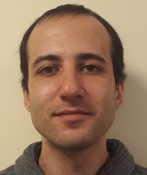Program Information
Quantification of Breathing Irregularity-Induced Geometric Uncertainties in 4DCT
P Sabouri1*, T Arai2 , A Sawant1 , (1) University of Maryland School of Medicine, Baltimore, MD, (2) UT Southwestern Medical Center, Dallas, TX
Presentations
TH-EF-605-2 (Thursday, August 3, 2017) 1:00 PM - 3:00 PM Room: 605
Purpose: Respiratory-correlated 4DCT has become the standard-of-care in pre-treatment Radiation-Therapy (RT) imaging. Consequently, its limitations and uncertainties have a cascading effect in all subsequent stages of RT planning and treatment. This study uses ground-truth fluoroscopic measurements to empirically quantify 4DCT geometric errors and specifies a limit on the maximum attainable accuracy of 4DCT images for tumor position estimation.
Methods: An in-house programmable externally and internally deformable lung phantom with eleven 1.5 ml water tubes was coupled with a motion platform programmed by 24 patient motion traces previously recorded using Synchrony system. For each patient trace, 4DCT and fluoroscopic (ground truth) images were obtained. Marker positions in each modality were segmented and tracked using intensity based thresholding and displacement of each marker estimated by each modality were compared.
Results: In the presence of breathing-irregularities, the largest component of 4DCT error is due to phase-averaging/binning while the error due to the spatial discretization is of the order of detector resolution (3 mm). 4DCT underestimates both the maximum superior and inferior displacements, and results in underestimation of the SI displacement by as large as 7 mm. The motion range error is found to correlate linearly with the breathing variability and is distributed according to a Weibull distribution. Quantification of inter- and intra-measurement errors shows that application of the 4DCT GTV can overestimate target displacement by 3-mm, as much as 60% of the time.
Conclusion: The inability of 4DCT to capture cycle-to-cycle variations results in geometric and therefore dosimetric errors. Our analysis shows that the largest contributing factor to the 4DCT error arises from temporal binning, followed by spatial discretization in the axial direction. Furthermore, temporal binning results in underestimation of the motion range, and has significant impact on the estimation of GTV and ITV.
Funding Support, Disclosures, and Conflict of Interest: This work was supported by NIH R01 CA169102.
Contact Email:
